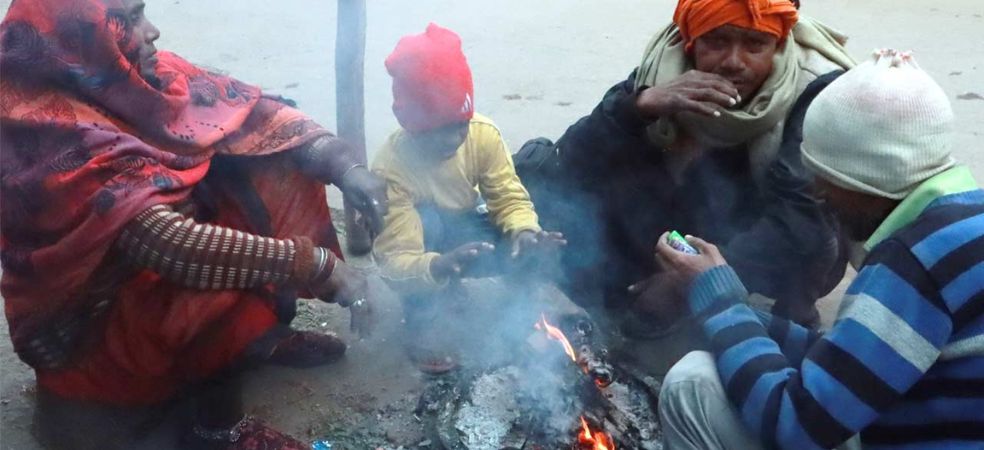What is the price of wheat in different mandis of Madhya Pradesh. Let’s see the complete list.
| Rates of Wheat in the mandis of MP |
| District |
Market |
Variety |
Minimum Price (per quintal) |
Maximum Price (per quintal) |
| Alirajpur |
Alirajpur |
Wheat |
2500 |
2501 |
| Badwani |
Anjad |
Wheat |
2700 |
2700 |
| Badwani |
Anjad(F&V) |
Wheat |
2700 |
2700 |
| Anupur |
Anuppur |
Wheat |
2600 |
2600 |
| Chhatarpur |
Badamalhera |
Mill Quality |
2500 |
2500 |
| Raisen |
Bareli |
Wheat |
2600 |
2600 |
| Raisen |
Begamganj |
Wheat |
2605 |
2705 |
| Shehdol |
Beohari |
Mill Quality |
2650 |
2650 |
| Betul |
Betul |
Mill Quality |
2702 |
2730 |
| Betul |
Betul |
Wheat |
2700 |
2701 |
| Betul |
Betul |
Wheat-Organic |
2696 |
2696 |
| Khargone |
Bhikangaon |
Wheat |
2830 |
3187 |
| Bhind |
Bhind |
Mill Quality |
2250 |
2605 |
| Rajgarh |
Biaora |
Mill Quality |
2880 |
2950 |
| Rajgarh |
Biaora |
Wheat |
2860 |
3015 |
| Mandla |
Bichhiya |
Mill Quality |
2200 |
2600 |
| Rewa |
Chaakghat |
Mill Quality |
2450 |
2835 |
| Chhindwara |
Chaurai |
Mill Quality |
2861 |
2885 |
| Sagar |
Deori |
Mill Quality |
2800 |
2800 |
| Panna |
Devandranagar |
Wheat |
2700 |
2700 |
| Dhar |
Dhar |
Lokwan |
2600 |
2700 |
| Dhar |
Dhar |
Wheat |
2850 |
2875 |
| Dindori |
Dindori |
Wheat |
2400 |
2450 |
| Indore |
Gautampura |
Mill Quality |
2700 |
2700 |
| Indore |
Gautampura |
Wheat |
2421 |
2500 |
| Indore |
Gautampura |
Wheat Mix |
2600 |
2850 |
| Rewa |
Hanumana |
Mill Quality |
2600 |
2600 |
| Chhatarpur |
Harpalpur |
Wheat |
2810 |
2810 |
| Indore |
Indore |
Wheat |
2800 |
2800 |
| Jabalpur |
Jabalpur |
Wheat |
2500 |
2600 |
| Tikamgarh |
Jatara |
Mill Quality |
2850 |
2850 |
| Tikamgarh |
Jatara |
Wheat |
2600 |
2640 |
| Balaghat |
Katangi |
Wheat |
2850 |
2925 |
| Katni |
Katni |
Mill Quality |
2780 |
2791 |
| Katni |
Katni |
Wheat |
2800 |
2800 |
| Tikamgarh |
Khargapur |
Mill Quality |
2620 |
2700 |
| Dhar |
Kukshi |
Wheat |
2400 |
2800 |
| Bhind |
Lahar |
Mill Quality |
2800 |
2878 |
| Gwalior |
Lashkar |
Wheat |
2875 |
2905 |
| Chhatarpur |
LavKush Nagar(Laundi) |
Mill Quality |
2655 |
2800 |
| Dewas |
Loharda |
Wheat |
2800 |
2863 |
| Dhar |
Manawar |
Wheat |
2800 |
2800 |
| Mandla |
Mandla |
Mill Quality |
2700 |
2710 |
| Satna |
Mehar |
Local |
2600 |
2725 |
| Satna |
Nagod |
Mill Quality |
2500 |
2620 |
| Shajapur |
Nalkehda |
Mill Quality |
2841 |
2841 |
| Shajapur |
Nalkehda |
Wheat |
2815 |
2815 |
| Tikamgarh |
Niwadi |
Mill Quality |
2825 |
2900 |
| Seoni |
Palari |
Wheat |
2750 |
2800 |
| Tikamgarh |
Prithvipur |
Mill Quality |
2750 |
2800 |
| Satna |
Ramnagar |
Mill Quality |
2800 |
2800 |
| Rewa |
Rewa |
Wheat |
2800 |
2800 |
| Sagar |
Sagar |
Wheat |
2580 |
2605 |
| Khargone |
Sanawad |
Wheat |
2800 |
2800 |
| Indore |
Sanwer |
Wheat |
2690 |
2710 |
| Rajgarh |
Sarangpur |
Wheat |
3021 |
3021 |
| Satna |
Satna |
Wheat |
2400 |
2850 |
| Badwani |
Sendhwa |
Wheat |
2900 |
2900 |
| Seoni |
Seoni |
Mill Quality |
2600 |
2620 |
| Seoni |
Seoni |
Wheat |
2785 |
2800 |
| Sagar |
Shahagarh |
Mill Quality |
2750 |
2800 |
| Shehdol |
Shahdol |
Mill Quality |
2500 |
2500 |
| Sidhi |
Sidhi |
Mill Quality |
2480 |
2509 |
| Mandsaur |
Suvasra |
Wheat |
2500 |
2605 |
| Jhabua |
Thandla |
Mill Quality |
2500 |
2500 |
| Jhabua |
Thandla |
Wheat |
2700 |
2700 |
| Ujjain |
Ujjain |
Mill Quality |
2500 |
2501 |
| Umariya |
Umariya |
Local |
2800 |
2800 |
| Umariya |
Umariya |
Mill Quality |
2400 |
2500 |
| Umariya |
Umariya |
Wheat |
2500 |
2815 |
Source: Agmarknet
To know the information related to agriculture and the latest market price, keep reading Gramophone articles. If you liked today’s information then do share it with friends.
Share









